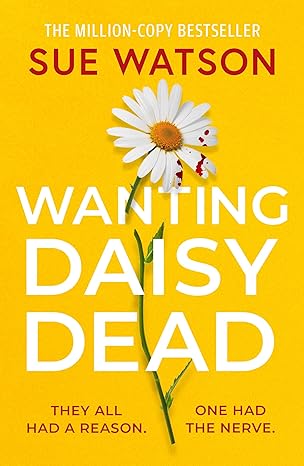
What happens when the past refuses to stay buried? Sue Watson’s Wanting Daisy Dead takes that chilling premise and spins it into a modern whodunit packed with secrets, lies, and the haunting echoes of a tragedy that never really ended.
Twenty years ago, Daisy Harrington, a university student with her whole life ahead of her, went out for the evening and never returned. A week later her body was discovered, and Professor David Montgomery was convicted of her murder. The case seemed closed. But now, decades later, a podcast called The Killer Question reopens the investigation, arguing that Montgomery who recently died in prison was innocent. To test their theory, the producers invite Daisy’s former housemates back to Exeter for a weekend reunion that no one wants to attend. If they refuse, the podcast threatens to reveal the personal secrets they have been hiding for years.
Watson structures the novel through alternating first-person perspectives, interwoven with podcast transcripts that add a true-crime documentary feel. At first the shifting voices and snippets of recorded dialogue can feel disjointed, but as the story deepens the format pulls readers into a tense, voyeuristic experience. It is easy to feel as though you are eavesdropping on guilty confessions and strained reunions.
The book thrives on its atmosphere of suspicion. Every character harbors a motive, and old rivalries, jealousies, and regrets resurface during the fraught weekend. This is classic locked-room mystery territory with a contemporary twist: imagine Murder on the Orient Express colliding with Survivor and a binge-worthy true crime podcast.
Not all readers, however, have been charmed by Watson’s execution. Some have criticized the dialogue as clunky and overly expository, with characters speaking lines that feel more like explanations for the reader than natural conversation. Others found the characters too unpleasant to care about, describing them as flat caricatures rather than complex people. The novel’s pacing has also drawn mixed reactions; while some readers praised it as gripping and twist-filled, others complained of repetitive scenes that dragged the story out.
Yet for many mystery fans, the novel delivers exactly what it promises: a puzzle box of secrets where every chapter peels back another layer. The podcast device injects freshness, and the gradual exposure of each character’s hidden truth keeps the pages turning. The climax, while divisive, has been described by enthusiastic readers as shocking and satisfying.
Wanting Daisy Dead may not be flawless, but it offers enough intrigue and atmosphere to keep mystery lovers hooked. If you enjoy stories that blend traditional whodunit tropes with the modern obsession for true crime storytelling, this book is worth adding to your reading list.


